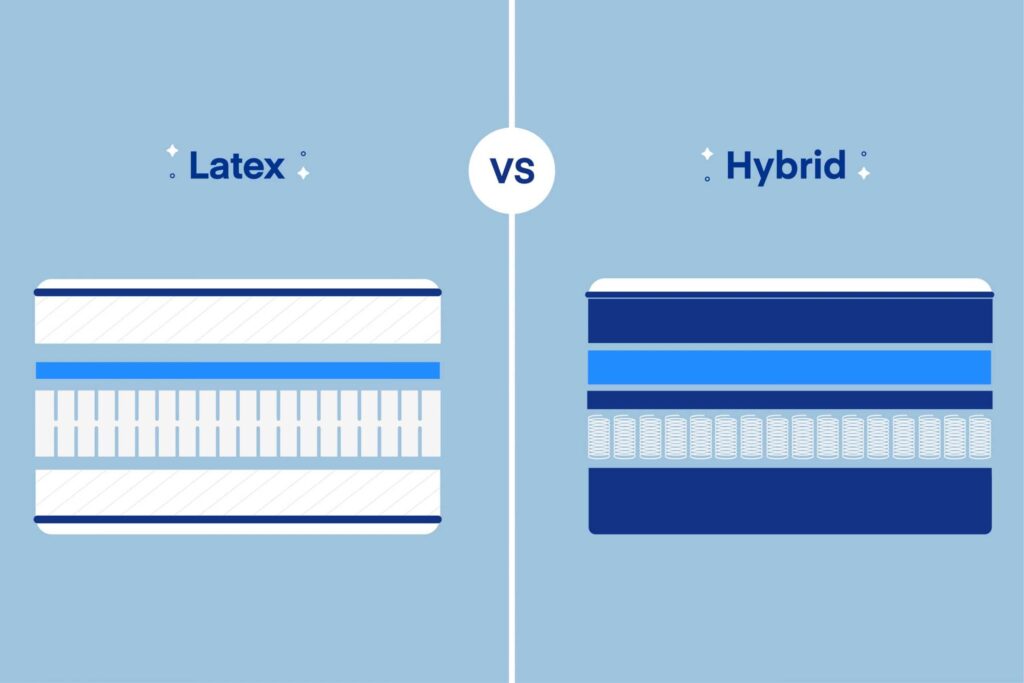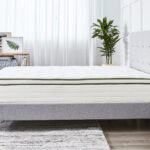If you’re considering purchasing a latex mattress, you may be wondering “How long do latex mattresses last?” Latex mattresses can provide superior comfort and support, but their lifespan can vary depending on their quality and how you care for them. In this article, we’ll discuss the factors that affect how long a latex mattress will last, and provide tips for extending the life of your mattress.
What is a Latex Mattress?
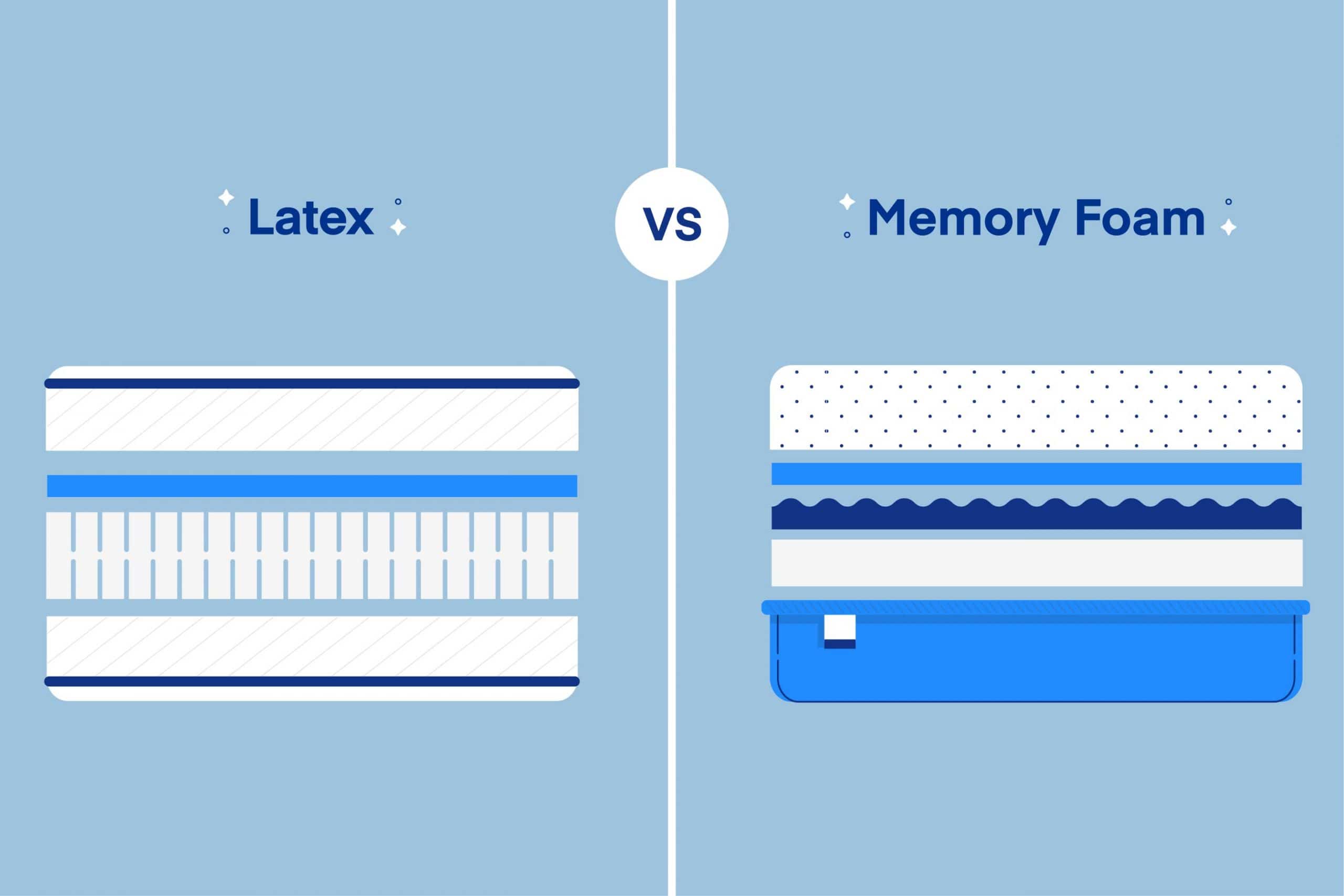
A latex mattress is a type of bedding that is made with natural or synthetic rubber. It is usually softer and more responsive than other types of mattress, providing improved comfort and support. Latex mattresses also offer more support for your spine as it contours to your body shape, providing better posture and reducing the risk of back pain. Additionally, some latex mattresses are designed to be breathable, which helps to keep you cool and comfortable during the night.
When it comes to durability, latex mattresses are generally known to last longer than other types. Latex mattresses typically have a lifespan of 8-10 years, depending on the quality and care taken in their maintenance.
| Type of Mattress | Average Lifespan |
|---|---|
| Latex Mattress | 8-10 years |
| Memory Foam Mattress | 4-8 years |
| Innerspring Mattress | 3-7 years |
When it comes to how long does a latex mattress last, it is important to keep in mind that the longevity of your mattress depends on how well it is maintained and cared for. Proper care and maintenance will help to extend the life of your latex mattress, ensuring that it lasts for many years to come.
What Affects the Lifespan of a Latex Mattress?
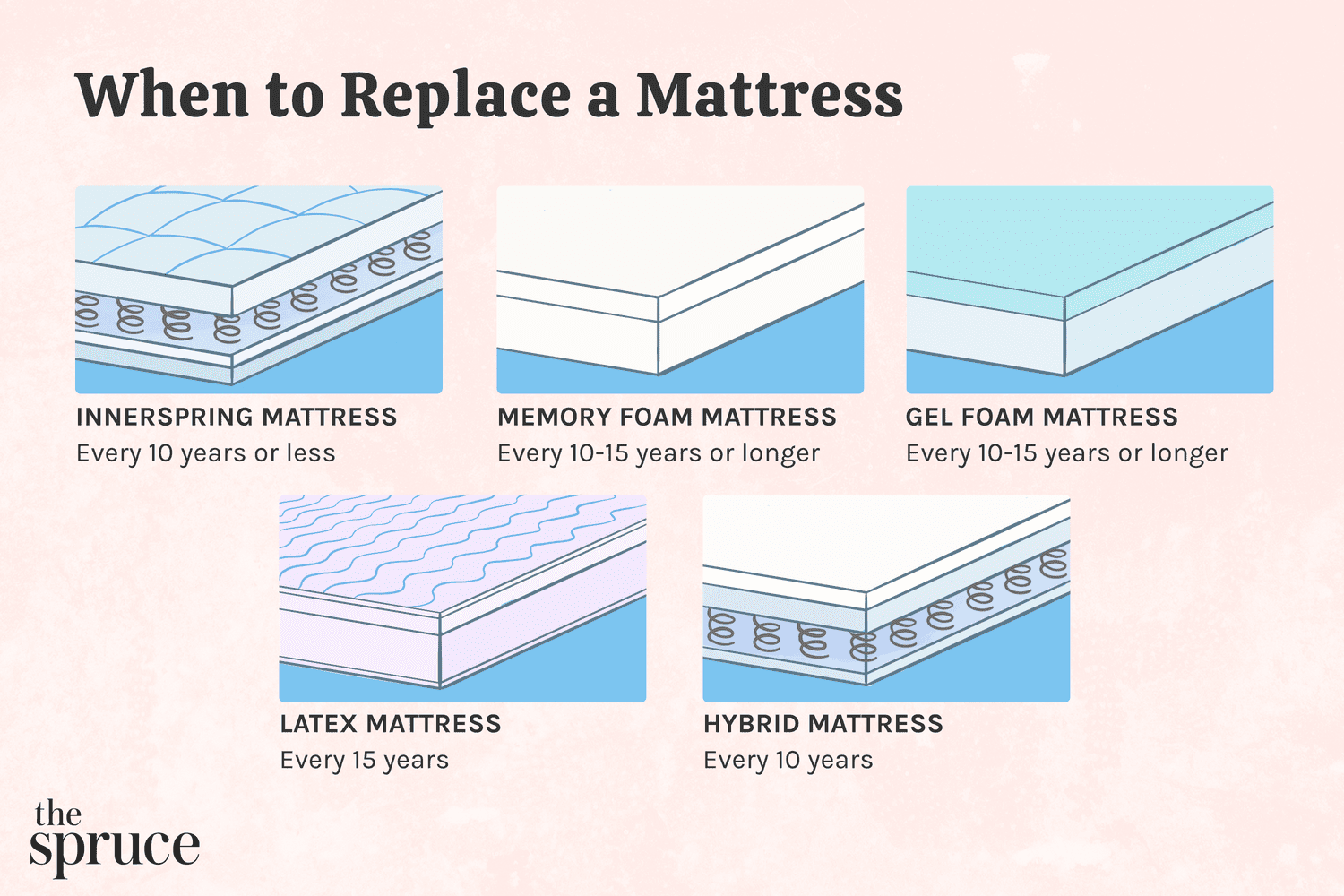
The lifespan of a latex mattress is influenced by a variety of factors, including the construction of the mattress, the quality of materials used, the level of care provided, and the environment in which it is used. Here’s a look at each factor in detail:
Construction
The quality of the mattress construction plays an important role in how long it lasts. Latex mattresses have a lifespan of up to 15 years when made with the highest quality materials and construction methods. Lower quality mattresses may last only a few years. Choose a mattress with strong encasement, reinforced edges, and supportive coils to ensure the longest life.
Materials
The materials used in a latex mattress can also affect its lifespan. Natural latex is generally more durable and longer lasting than synthetic latex, but it comes at a higher cost. Look for mattresses made with natural latex and high quality foam to ensure the highest durability.
Care and Maintenance
The regular care and maintenance of a latex mattress is also important for extending its lifespan. This includes rotating the mattress regularly, using a mattress protector, and vacuuming the mattress. Regularly cleaning the mattress and using proper cleaning products can also help to extend its life.
Environment
The environment in which the mattress is used can also influence its lifespan. For example, if the mattress is placed in a damp or humid environment, it can cause the mattress to break down faster. It is important to store the mattress in a dry, cool environment to help extend its life.
By understanding the factors that affect the lifespan of a latex mattress, you can make an informed decision about which mattress will be the best fit for your needs. With proper care and maintenance, a latex mattress can provide years of comfortable sleep.
Pros and Cons of a Latex Mattress
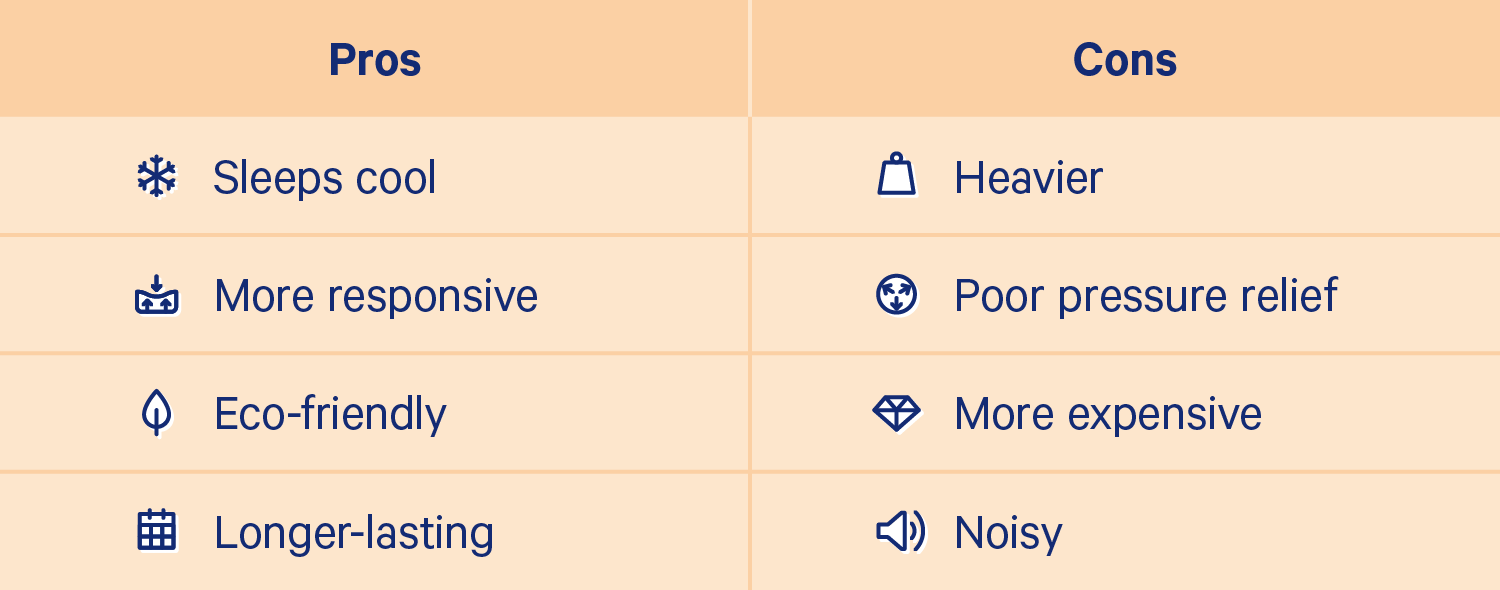
Pros
- Latex mattresses provide superior comfort, support, and durability.
- Latex mattresses are naturally hypoallergenic, making them ideal for people with allergies.
- Latex mattresses are resistant to dust mites and other allergens.
- Latex mattresses are naturally resistant to mold and mildew.
- Latex mattresses are highly breathable and provide excellent air circulation.
- Latex mattresses are environmentally friendly and can be recycled.
Cons
- Latex mattresses are usually expensive.
- Latex mattresses require more maintenance than other types of mattresses.
- Latex mattresses can be heavy and difficult to move or rotate.
- Latex mattresses are not suitable for people who are allergic to latex.
Benefits of a Latex Mattress
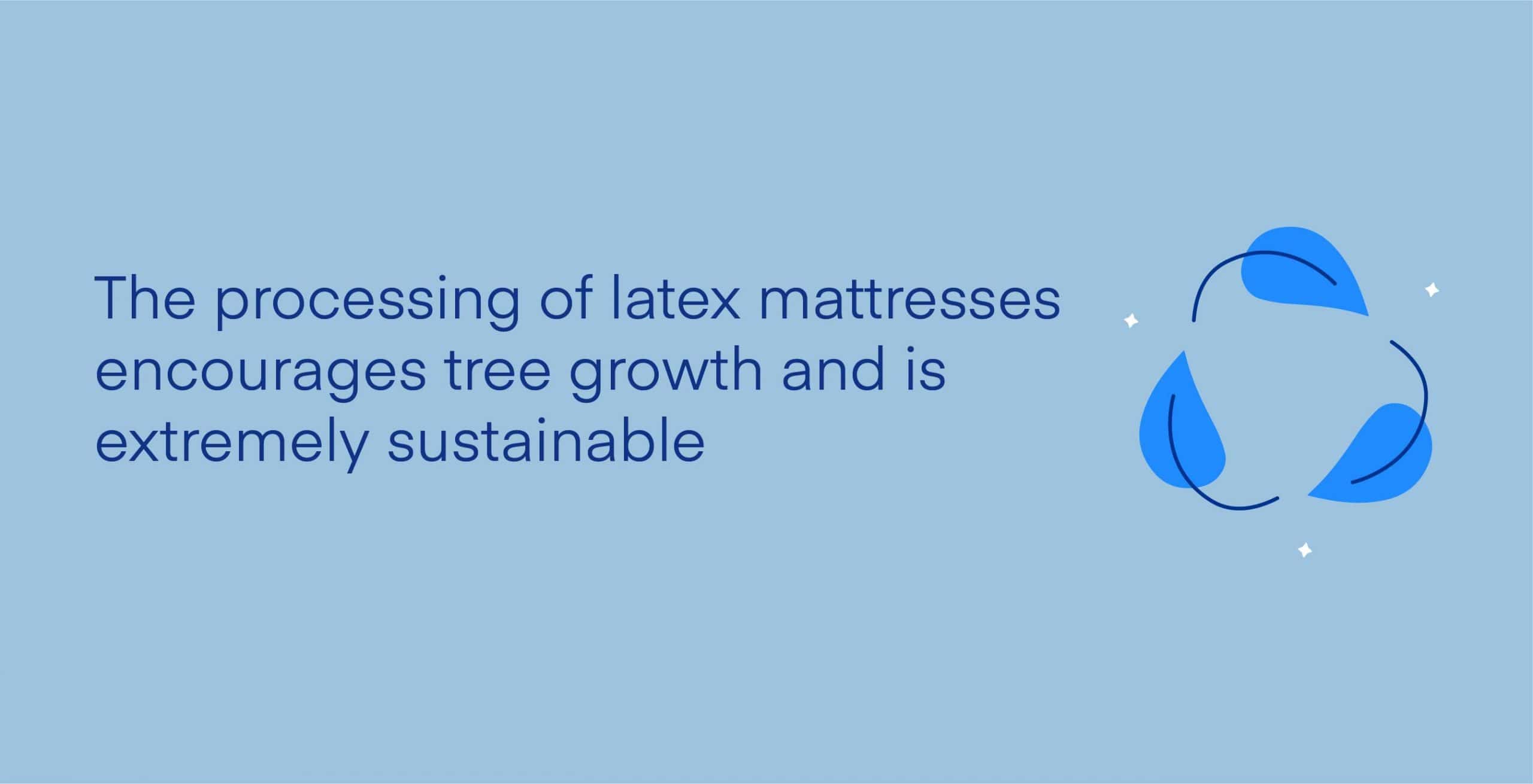
- Durability: Latex mattresses are highly durable and last longer than other types of mattresses. They can easily last up to 10 years or more.
- Pressure Relief: Latex mattresses are designed to provide superior pressure relief. The material is more resilient and provides more support for the body, helping to reduce the pressure points that can cause discomfort.
- Hypoallergenic: Latex mattresses are naturally hypoallergenic and resistant to dust mites, bacteria, and other allergens. This makes them a great choice for anyone with allergies or sensitive skin.
- Motion Isolation: Latex mattresses are excellent at isolating motion. This means that when one person moves, the other person is not disturbed, making it an ideal choice for couples.
- Breathability: Latex mattresses are very breathable, which keeps the mattress cool and comfortable. This helps to reduce the build-up of heat and moisture, which can lead to a more restful sleep.
How Long Does a Latex Mattress Last?
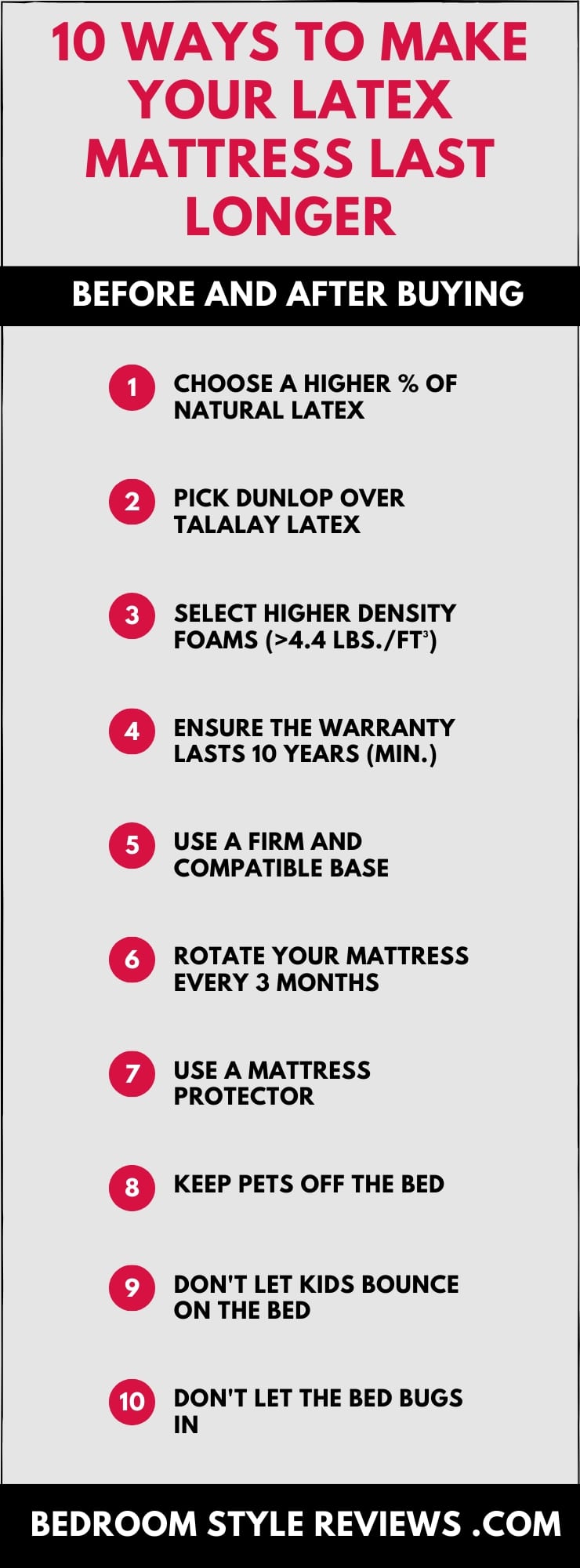
Latex mattresses are known for their durability and longevity. Generally, a latex mattress will last between 8 and 12 years, depending on the quality of the mattress and the frequency of use.
High quality latex mattresses are made with natural latex harvested from rubber trees, which is then treated and processed to create a durable, comfortable mattress. The natural latex foam is highly resistant to wear and tear, and will retain its shape longer than other mattress materials.
If you take good care of your latex mattress, it can easily last for 10 years or more. To extend its life, rotate the mattress every six months and avoid sleeping in the same position every night. To keep the mattress clean, vacuum it regularly and spot-clean it with a mild detergent when needed.
Latex mattresses are also known for their resilience. Even after years of use, they remain responsive and supportive, providing the same level of comfort night after night.
Overall, a latex mattress is one of the longest-lasting types of mattresses available. With proper care and maintenance, it can last up to 12 years or more.
Tips for Extending the Life of a Latex Mattress
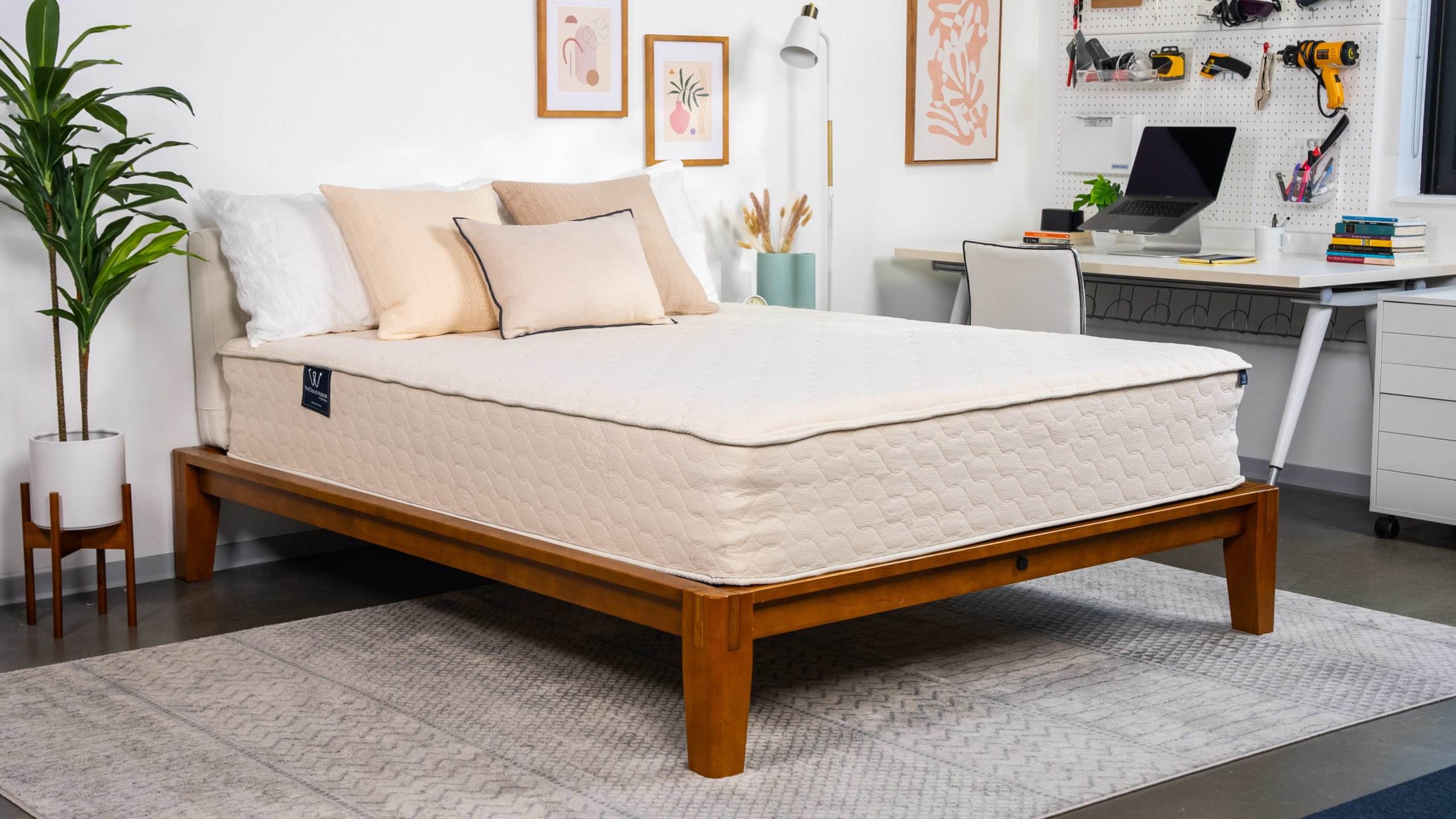
| Tip | Explanation |
|---|---|
| Use a Mattress Pad | Using a mattress pad can help protect the mattress from dirt and debris as well as prevent spills from damaging the latex material. |
| Rotate and Flip the Mattress Regularly | Rotating and flipping latex mattresses every few months can help to even out the wear and tear that occurs over time. |
| Clean the Mattress Regularly | Regularly cleaning the mattress with a damp cloth and mild soap can help to remove dirt and other particles that can damage the material. |
| Use a Firm Foundation | Using a firm foundation such as a box spring or platform bed can help to provide support and reduce sagging. |
| Don’t Jump or Bounce on the Mattress | Jumping and bouncing on the mattress can cause the material to break down more quickly and create indentations. |
Alternatives to Latex Mattresses
When it comes to finding a good mattress, latex mattresses are often a popular choice. However, if you’re not sure that a latex mattress is the right fit for you, there are many other options available. Here are some of the most popular alternatives to latex mattresses:
- Memory Foam Mattresses – Memory foam mattresses are popular for their contouring and pressure relief. Memory foam mattresses are also known for their motion isolation, making them a good choice for couples who don’t want to be disturbed by the movements of their partner.
- Innerspring Mattresses – Innerspring mattresses are a classic choice, and offer a bouncy and supportive feel. Innerspring mattresses are also good at providing airflow, which is an important factor for those who tend to sleep hot.
- Hybrid Mattresses – Hybrid mattresses combine the support of innerspring coils with the contouring of memory foam or latex. They are a good option for those who want the best of both worlds.
- Adjustable Air Mattresses – Adjustable air mattresses can be adjusted to different firmness levels. This makes them a good choice for couples who have different mattress preferences.
- Waterbeds – Waterbeds are a unique option that offer an adjustable level of firmness. They are a good option for those who want the feeling of being cradled by the mattress.
Frequently Asked Questions
What materials are used in Latex Mattresses?
- Natural Latex – Natural latex is derived from the sap of rubber trees. It is the most common material used in latex mattresses and is both durable and supportive. It is also hypoallergenic, breathable, and resistant to dust mites.
- Synthetic Latex – Synthetic latex is a man-made material made from petrochemicals. It is often used as a cheaper alternative to natural latex. However, it is not as durable and supportive as natural latex.
- Cotton – Cotton is a natural fiber used in the comfort layer of many latex mattresses. It is often combined with wool and/or synthetic fibers to create a softer, more breathable surface.
- Wool – Wool is a natural fiber that is often used in the comfort layer of latex mattresses. It is highly breathable and helps to regulate body temperature.
- Synthetic Fibers – Synthetic fibers, such as polyester and rayon, are often used in the comfort layer of latex mattresses. They are cheaper than natural fibers and are often used to add softness and breathability.
Are Latex Mattresses Good for People With Allergies?
Yes. Latex mattresses are a great choice for people with allergies. The natural material is highly resistant to dust mites, mold and other allergens, making it an ideal choice for allergy sufferers. Here are some of the reasons why:
- Latex is naturally hypoallergenic, so it won’t trigger allergies.
- Latex is naturally resistant to dust mites and other allergens.
- Latex is naturally resistant to mold and mildew.
- Latex is naturally resistant to bacteria, so it won’t harbor allergens.
- Latex is naturally breathable, so it won’t trap heat and moisture.
In addition to being hypoallergenic, latex is also highly durable and will last for years with minimal maintenance. This makes it an ideal choice for people who suffer from allergies but want a mattress that will last.
What should I do to maintain my Latex Mattress?
- Rotate the mattress regularly: Rotating a latex mattress at least once every three months helps to evenly distribute the weight and wear of the mattress, promoting a longer lifespan.
- Keep the mattress clean: Vacuum the mattress periodically to remove dust and debris. Spot clean any stains with cold water and mild detergent.
- Protect the mattress from moisture: Wrap the mattress in a mattress protector or encasement to help keep moisture and dust mites away.
- Provide adequate support: Using the right bed frame and mattress foundation can help ensure your mattress is properly supported.
How do I know when it’s time to replace my Latex mattress?
It’s time to replace your Latex mattress when you experience an increase in stiffness, lack of support, and a decrease in comfort. Other signs include visible sagging or indentations, or a mattress that is no longer bouncy. In addition, if you suffer from allergies and notice that your symptoms are becoming worse, this may be an indication that the mattress is no longer providing adequate protection. If any of these signs occur, it’s time to purchase a new Latex mattress.
Are Latex Mattresses More Expensive than Traditional Mattresses?
Yes. Latex mattresses are typically more expensive than traditional mattresses. Factors that influence the price of latex mattresses include:
- The quality of materials used in the mattress
- The type of latex used (natural or synthetic)
- The type of construction (bonded, blended, or all-natural)
- The size of the mattress
- The thickness of the mattress
- The retailer or manufacturer
Latex mattresses are generally more expensive than traditional mattresses because they are constructed from higher-quality materials and are designed to last longer. They also offer superior comfort and support, which makes them a great investment for those who suffer from chronic pain or allergies.
Conclusion
Latex mattresses can last up to 15 years with proper care. However, the actual lifespan of the mattress depends on its quality and how it is used. With proper care and maintenance, a latex mattress can provide consistent support and comfort for many years.
